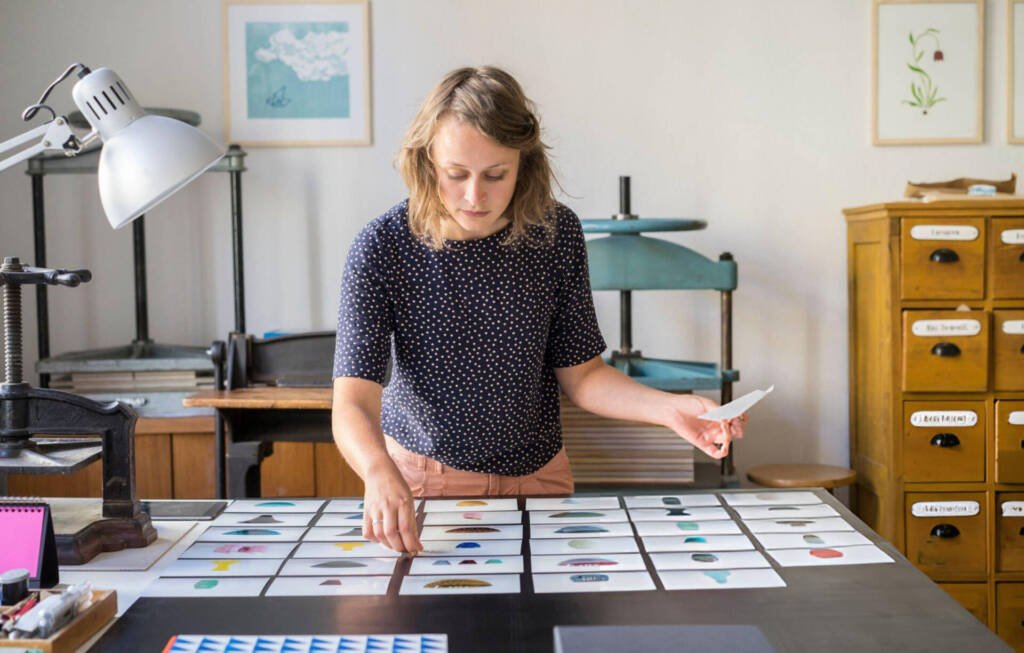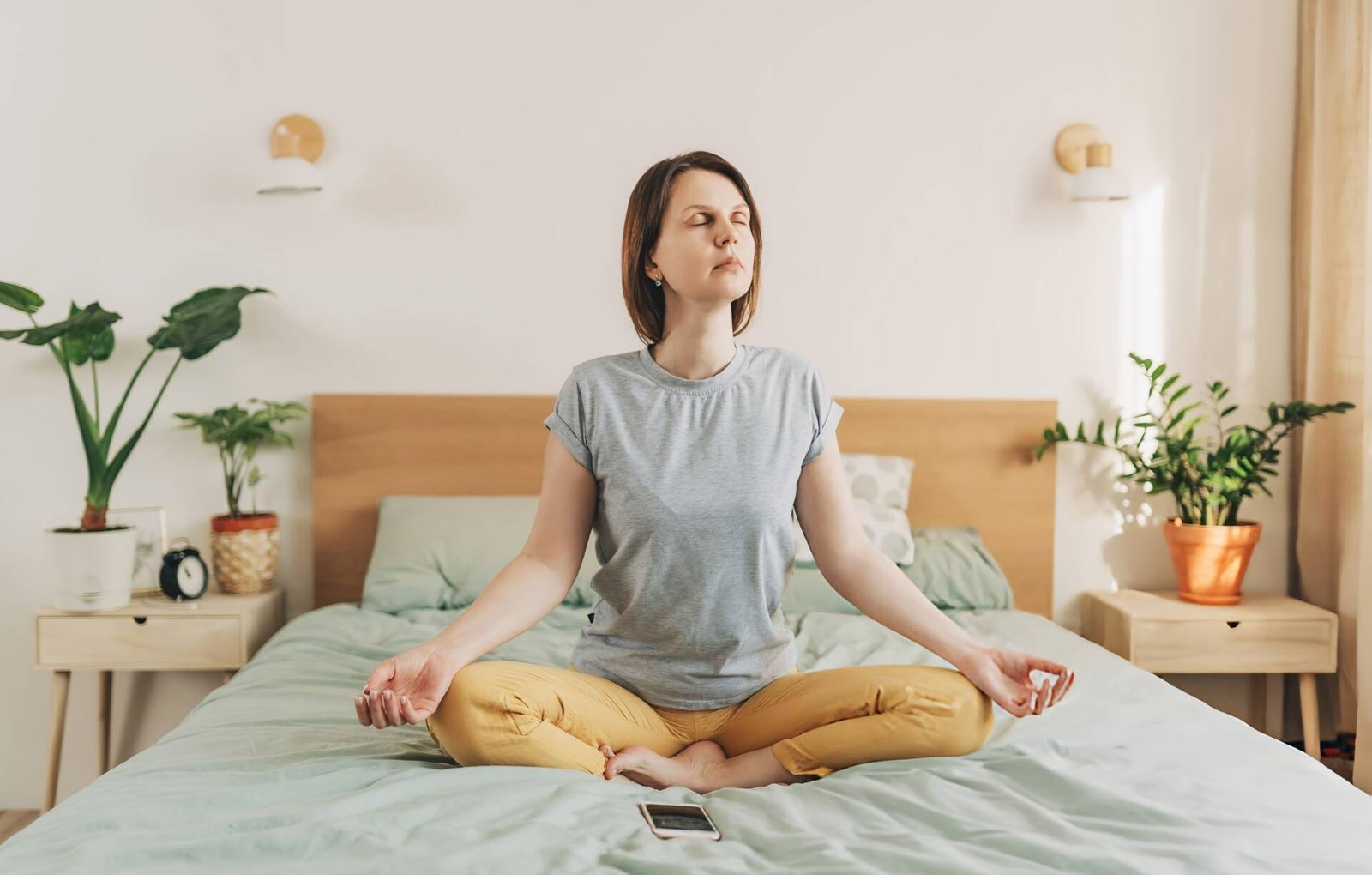Have you ever noticed how your best ideas often come when you’re fully immersed in an activity, like sketching aimlessly or taking a quiet walk? That’s the magic of being present—completely tuned in to the moment without the distractions of the past or future.
For creative professionals, mindfulness and present-moment awareness are more than just buzzwords—they’re tools to unlock deeper focus, emotional clarity, and innovative thinking. Whether you’re an artist waiting for inspiration to strike or an entrepreneur brainstorming your next big idea, being present could be the key to unlocking your creative potential.
Table of Contents
This blog explores how mindfulness fuels creativity, the science behind it, and practical tips for cultivating present-moment awareness in your creative work. By the end, you’ll have actionable insights to transform your approach to innovation.
What Does It Mean to Be Present?

Being present, or practicing “present-moment awareness,” is about fully dedicating your attention to the here and now. Rather than dwelling on past mistakes or stressing over future deadlines, it’s an intentional effort to immerse yourself entirely in the current task or experience.
For example, imagine standing in front of a blank canvas, focusing entirely on the textures of the paint, the crisp scent in the studio, and the feel of bristles gliding across the surface. These moments of total engagement aren’t just satisfying—they’re a gateway to creative breakthroughs.
Mindfulness, often used interchangeably with being present, encourages this nonjudgmental awareness of the here and now. For creative professionals, mindfulness nurtures a state of mind where ideas can flow freely without fear of failure or self-doubt blocking the way.
An Example of Presence in Action
Take a writer zoning in on their manuscript. Instead of stressing over the word count, looming deadlines, or audience expectations, they immerse themselves completely in the process. They revel in crafting each word, refining every phrase, and capturing the subtle nuances of meaning and emotion. In this state of proper focus, the work becomes more than just a task—it transforms into a flow of more affluent, more authentic creation, the kind of work every artist aspires to produce.
Being present isn’t just about avoiding distractions; it’s about showing up fully, mentally and emotionally, for the task at hand. It’s giving yourself the permission and freedom to explore new ideas, create without fear, and problem-solve with clarity and intention. When we embrace this mindset, we unlock our potential for more profound, more meaningful work.
The Science Behind Mindfulness and Creativity

How Mindfulness Fuels Creative Thinking?
Research reveals that mindfulness can amplify creativity by reducing mental clutter and sharpening focus. When the mind isn’t bogged down by distractions, stress, or self-criticism, it’s easier to generate innovative ideas.
One study published in Mindfulness Journal found that regular mindfulness practice improves “divergent thinking”—a crucial component of creativity where people generate multiple solutions to a problem. It also strengthens “convergent thinking,” enabling us to select the best solution from those ideas.
But the benefits don’t end there. Mindfulness helps quiet the “inner critic,” the part of our brain responsible for self-doubt and perfectionism and activates other brain regions, like the prefrontal cortex. This allows imaginative thinking to skyrocket and helps us manage complex decisions with clarity.
Real-Life Data on Mindfulness and Creativity
Large companies like Google and Pixar integrate mindfulness programs into their workflows—and for a great reason! Studies show mindfulness boosts creative problem-solving by enhancing mental agility and reducing workplace burnout. If it works for billion-dollar brands, why not for solo creatives like you?
Even globally recognized creatives like author Elizabeth Gilbert and musician John Legend credit mindfulness for periods of profound innovation. By being present, they’ve confidently embraced creative risks, turning ideas into masterpieces.
Benefits of Being Present for Creative Professionals

- Boosts Your Focus and Reduces Distractions
Mindfulness anchors you at the moment, helping to silence the constant background noise and mental distractions that can derail focus. By staying fully present, you create space for clarity and creativity to thrive. Writers who practice present moment awareness frequently report entering “flow states,” a mental zone where ideas come effortlessly, allowing them to produce consistent, inspired work without interruption.
Similarly, designers who embrace mindfulness often notice sharper instincts when making creative decisions. This heightened intuition enhances their output and saves valuable time by reducing hesitation and second guessing—proof that creativity and focus go hand in hand.
2. Enhances Your Observation and Perspective
Being present enhances your ability to notice the finer details and subtle connections that others might easily overlook. It allows you to engage with the world more deeply and more mindfully. For example, a photographer who practices presence might notice the intricate interplay between light and shadow during an otherwise uneventful commute.
They could see beauty in the way sunlight filters through a cracked window or the rhythm of passing footsteps on a rainy day. This attentiveness can transform the ordinary into something extraordinary, offering fresh perspectives that often ignite creative sparks and inspire new ideas.
3. Promotes Emotional Clarity
Creativity flows best when emotions are balanced, as a calm, focused mind allows ideas to flourish. Practicing mindfulness can regulate feelings of frustration, stress, or overwhelm, creating the mental space needed for thoughtful and deliberate decision-making. This not only helps you stay grounded but also encourages innovation and problem-solving.
Whether you’re experimenting with a bold brush stroke on a canvas, drafting a compelling story, or pivoting a business idea in response to challenges, clarity, and emotional control lead to better, more impactful outcomes. Mindfulness empowers you to approach creative tasks with confidence and focus, unlocking your true potential.
4. Encourages Playful Experimentation
When you’re present, you give yourself permission to try new things without the fear of failure constantly looming over you. Being fully in the moment creates a safe space for experimentation, where mistakes are seen as opportunities to learn rather than setbacks. This nonjudgmental perspective fosters a sense of curiosity and encourages free exploration—whether it’s mixing unexpected materials to create something unique in your art project, brainstorming bold new concepts in your writing, or testing innovative marketing strategies to push your startup in a fresh direction.
Practical Ways to Cultivate Present-Moment Awareness for Creativity

- Start with Daily Mindfulness Practices
Even just five minutes of deep breathing or guided meditation can help center your mind and reduce stress. These simple practices allow you to take a pause, focus on your breathing, and reset both mentally and physically, making them a beneficial addition to a busy day.
Apps like Calm or Headspace are excellent tools for beginners, offering a variety of quick, easy-to-follow sessions that fit into any schedule. Whether you’re at home, in the office, or on the go, these apps provide guided exercises to help you build a mindfulness habit with ease.
2. Engage in Creativity-Focused Meditation
Try creativity-centered meditations that channel your imagination and unlock new ways of thinking. Some sessions guide you to visualize abstract ideas, helping you tap into your inner artist or dreamer, while others focus on creative problem-solving through deep reflection and mindful exploration. These meditations are designed to inspire fresh perspectives and nurture innovation in both personal and professional endeavors.
3. Practice Mindful Observation
Set aside a few minutes daily to observe the world around you. Notice the textures, colors, and movement in your surroundings. For example, watch how sunlight dances on leaves or how droplets pattern a tabletop. Simple exercises like these train your mind to pick up on subtler details that can inspire your work.
4. Use Flow-State Activities to Anchor the Mind
Activities like drawing, journaling, or even taking mindful walks are simple yet effective ways to immerse yourself in the present moment. Engaging in these practices allows your mind to slow down and fully engage with the present moment, thereby reducing stress and distractions. This state of mindfulness can lead to enhanced focus and daydream-like clarity, creating the ideal mental space for sparking original and creative ideas.
Whether it’s sketching out your thoughts, reflecting on your experiences through writing, or letting your mind wander during a peaceful walk, these activities can unlock new perspectives and inspire fresh solutions.
5. Try Journaling for Creative Clarity
Journaling is both a tactile way to stay present and a powerful tool for processing ideas and emotions. It allows you to slow down and connect with your thoughts in a meaningful way, creating space to explore your creativity without judgment. Use your journal to brainstorm freely, jot down new ideas, or map out solutions to challenges.
You can also reflect on lessons you’ve learned during your creative process, tracking your growth and gaining clarity on your next steps. Whether it’s a daily habit or a once-in-a-while exercise, journaling can be an invaluable practice for personal and creative development.
How to Integrate Mindfulness into Your Creative Routine?

Creating a mindful creative practice doesn’t require an overhaul—start by weaving small habits into your day:
- Morning Grounding Rituals: Begin each creative session with a 2-minute grounding technique, like the “5-4-3-2-1” method, where you list sensations to engage your focus.
- Intentional Breaks: When creativity runs dry, use deliberate pauses to reset. Step away and spend five minutes noticing your feelings or what’s around you.
- Mini Mindfulness Exercises: Before tackling revisions or brainstorming ideas, close your eyes, breathe deeply, and release preoccupations. This helps bring greater clarity and intention to your efforts.
Consistency matters. Over time, these small rituals will enhance innovation with minimal effort.
Final Words

The connection between mindfulness and creativity is undeniable. By cultivating presence in your life, you’ll notice a remarkable ability to focus, think freely, and refine your ideas—all while rediscovering what you love about creating in the first place.
Creativity flourishes when you show up for the moment. Start small today—breathe, observe, and take note of how being present transforms not just your ideas but your process. Your world as a creator is about to open up in ways you never imagined.
It’s time to move forward with intention and explore mindful resources tailored just for creatives. Your next breakthrough is waiting.





